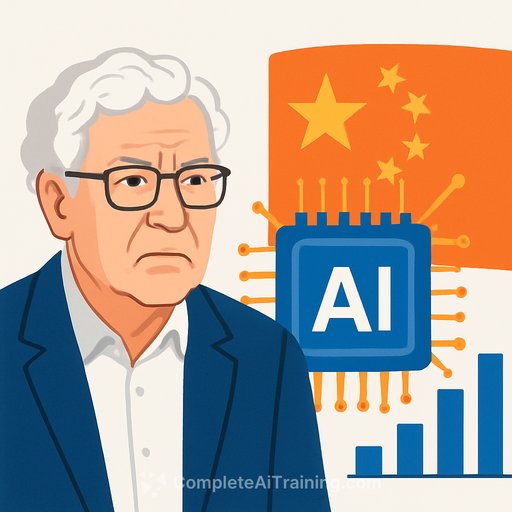Geoffrey Hinton warns: the US lead in AI is shrinking - funding cuts could hand it to China
Geoffrey Hinton says the United States is still ahead of China in AI, but the margin is thinner than people think and getting smaller. His point is blunt: cut basic science and you kneecap the future. Attack research universities, pull grants, and you "eat the seed corn."
Hinton made the comments on The Weekly Show with Jon Stewart, stressing that today's breakthroughs in deep learning came from decades of steady, basic research. He noted the total cost behind the ideas that enabled deep learning was likely less than one B-1 bomber - a stark way to frame the return on investment from academic science.
Why this matters for scientists and R&D leaders
Deep learning didn't appear out of nowhere. It compiles from small, patient bets: graduate fellowships, unconstrained lab time, open publication, and peer review. Pull those threads and the pipeline of ideas, talent, and reproducible benchmarks thins fast.
For US labs and companies, the compounding advantage comes from pre-competitive research shared across universities and industry. If that base erodes, applied teams feel it next: fewer ideas to commercialize, fewer experts to hire, and more dependence on closed, external ecosystems.
The policy risk Hinton is pointing to
Hinton did not cite specific cuts, but his warning lands amid federal pressure on elite universities. Officials have threatened to withhold research funds from institutions such as Harvard, MIT, Princeton, Columbia, and UCLA over campus policy disputes, including allegations related to antisemitism and diversity practices. The administration has said it is "close" to a settlement with Harvard, but the larger issue remains: instability in funding and academic independence.
Actions labs and R&D leaders can take now
- Quantify your lab's ROI: document grant-to-impact timelines, open-source outputs, patents, and workforce outcomes. Make it legible to non-scientists.
- Form pre-competitive consortia with peer institutions and industry to share compute, datasets, and evaluation pipelines independent of any single funder.
- Prioritize reproducibility: maintain public benchmarks, artifacts, and test suites that lower costs for follow-on research.
- Diversify funding: pair federal grants with philanthropy, state programs, and industry-sponsored basic research that preserves publication rights.
- Hedge compute access: build or join compute-sharing co-ops; negotiate academic credits with major cloud providers.
- Protect open hiring and visas: coordinate with university counsel and associations to keep talent pipelines stable.
Signals to watch
- Federal basic research budgets (NSF, NIH, DOE Office of Science). Track topline and directorate shifts via the AAAS R&D Budget and Policy Program and the NSF budget portal.
- Benchmark standings and publication quality in core areas (foundation models, efficient training, interpretability, safety, robotics, chip design).
- Export controls, research security rules, and campus compliance burdens that slow collaboration or data sharing.
- Stability of indirect cost rates and grant processing timelines, which directly affect lab staffing and compute planning.
- Talent flow: PhD enrollments, postdoc positions, and immigration policy outcomes for STEM roles.
The takeaway
US AI strength rests on basic research and the freedom of top universities to pursue it. Undercut that, and you slow the idea pipeline, drain talent, and give ground to state-driven systems that can fund long-horizon work without interruption. If the goal is to keep the lead, protect the seed corn.
Upskilling while budgets are uncertain
- For teams planning near-term capability gains, see role-based learning paths: AI courses by job.
Your membership also unlocks:






